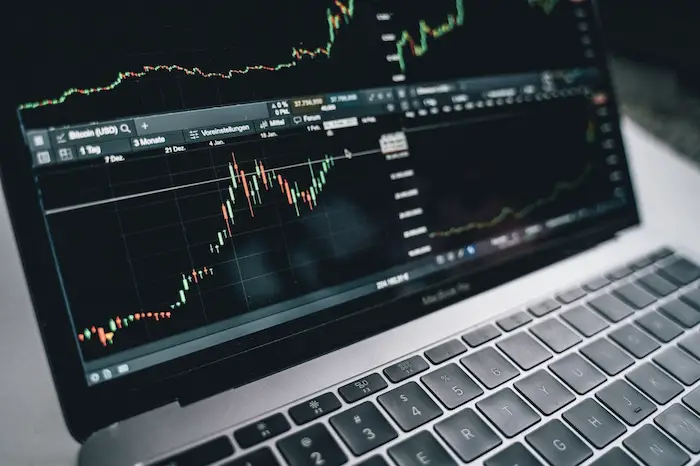
In the rapidly evolving landscape of financial markets, auto trading bots have emerged as a game-changing technology, revolutionizing the way trading is conducted in cryptocurrency and forex markets. These sophisticated software systems are designed to automatically execute trades on behalf of users, based on predefined algorithms and trading strategies. Their capability to analyze market data in real-time, make decisions without emotional interference, and execute trades round the clock underscores their growing significance.
In an era where market efficiency and reaction speed are paramount, auto trading bots offer traders—from novices to experts—a powerful tool to optimize their trading strategies, enhance their market presence, and capitalize on opportunities across global financial platforms. As the complexity and speed of markets continue to accelerate, particularly in the volatile realms of cryptocurrency and forex, the adoption and refinement of auto trading bots stand as a testament to the innovative pursuit of maximizing profitability and managing risk in digital finance.
Understanding Auto Trading Bots
At the core of modern trading, especially in the cryptocurrency and forex sectors, lies the integration of intelligent crypto AI trading bots. These sophisticated tools leverage algorithms and predefined rules to autonomously execute trades, epitomizing the blend of artificial intelligence and financial strategy. The backbone of these systems is their ability to parse vast amounts of market data, apply intricate trading strategies, and execute orders with precision—all without the fatigue or biases inherent to human traders.
The technological prowess of these bots enables them to operate tirelessly, 24/7, ensuring no lucrative market movement goes unnoticed, irrespective of the time zone or market conditions. This relentless operational capability is pivotal in managing and executing repetitive trading tasks, thereby significantly enhancing efficiency. Moreover, by minimizing human error, these automated systems not only safeguard against costly mistakes but also streamline the trading process, making it more efficient and less prone to errors driven by emotional decision-making.
In essence, intelligent crypto AI trading bots represent a paradigm shift in trading, offering an automated, always-on assistant that navigates the complexities of the financial markets with unprecedented efficiency and accuracy.
Types of Auto Trading Bots
In the realm of digital trading, auto trading bots are categorized into three principal types: social trading bots, algorithmic trading bots, and arbitrage bots. Each type harnesses distinct strategies and technologies to cater to varied trading needs and objectives.
Social Trading Bots thrive on the collective intelligence of social networks. They analyze data from social media and forums to gauge market sentiment and make trading decisions. By leveraging the power of crowd wisdom, these bots can anticipate market movements and execute trades accordingly. Their unique feature lies in their ability to sift through vast amounts of social media data to detect trends, making them invaluable for traders looking to capitalize on market sentiment.
Algorithmic Trading Bots operate on complex algorithms and mathematical models to execute trades. These bots are the epitome of precision trading, designed to follow specific sets of rules for placing orders. They can adapt their strategies based on real-time market conditions, aiming for the most opportune moments to enter or exit trades. This type ensures efficiency and speed, significantly surpassing human capabilities in identifying and acting on potential market movements.
Arbitrage Bots are specialized in exploiting price discrepancies across different exchanges. They continuously scan multiple platforms for differences in asset prices, buying low on one and selling high on another to secure a profit. Their operation hinges on the speed of execution, as the arbitrage opportunities they exploit are often fleeting. These bots contribute to market efficiency by helping level price variances across exchanges.
Each type of bot employs strategies like dollar-cost averaging and short selling to amplify profits. Dollar-cost averaging involves spreading out investments over time to reduce the impact of volatility, while short selling bets on the decline of asset prices to garner profits. Through these methods, auto trading bots offer traders diverse approaches to navigating the complexities of the financial markets.
Benefits and Drawbacks
The integration of auto trading bots into the trading strategy presents numerous advantages, paramount among them being the significant reduction in errors. By automating the trading process, these bots eliminate the emotional biases and inaccuracies that often plague human traders, leading to more disciplined and consistent trading. Furthermore, the ability to amplify profits through strategic implementations such as algorithmic trading and arbitrage offers an attractive proposition for traders looking to maximize their returns.
Another critical benefit is the capacity for 24/7 market monitoring. In the fast-paced world of trading, opportunities can arise at any moment. Auto trading bots ensure that no profitable move is missed, operating round the clock to capitalize on market movements across different time zones.
However, these advantages come with their own set of challenges. The cost of acquiring and maintaining sophisticated trading bots can be substantial, potentially eroding the profit margin they are designed to enhance. Additionally, these systems require a stable and continuous internet connection to function effectively, making them susceptible to downtime during connectivity issues. The digital trading space is also rife with scams, underscoring the importance of diligent research in selecting a reputable bot that aligns with the trader’s risk profile and trading goals.

Choosing the Right Auto Trading Bot
Selecting the optimal auto trading bot is a crucial decision that can significantly impact your trading outcomes. Key considerations include the bot’s compatibility with your preferred trading platforms and its array of security features to protect your investments. The level of customer support provided is also an important factor, as it can enhance your trading experience and provide necessary assistance when needed.
Consulting customer reviews and comparing the costs of different bots are essential steps in making an informed choice. These insights can reveal the bot’s performance in real-world trading scenarios and its cost-effectiveness, helping you to select a bot that not only meets your trading strategy and goals but also offers value for money.
Conclusion
Auto trading bots have revolutionized modern trading, offering advantages like error reduction, profit amplification, and constant market monitoring. However, they also come with challenges such as costs, the need for continuous internet, and scam risks. Choosing the right bot— one that aligns with your trading strategy, security requirements, and risk tolerance—is critical. Thorough research and consideration of customer feedback and cost comparisons are essential steps toward making an informed decision that enhances your trading efficacy and profitability.


